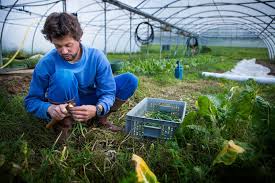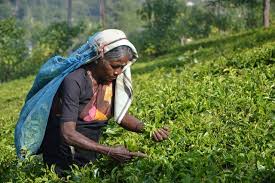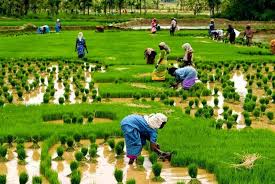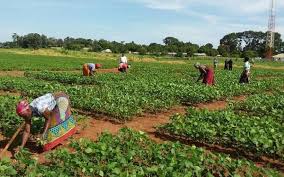This article focuses on the historical development of crop production, tracing its evolution from the early stages to modern-day practices. It also explores the origin and distribution of indigenous and exotic field crops and their classifications.
The article provides an overview of crop production’s historical development, its role in the supply of food and raw materials, Nigeria’s position in global food production, the challenges faced by crop production in Nigeria, and measures that could enhance field crop production in the country.
Read Also: 11 Medicinal Health Benefits Of Baccharis articulata (Mule fat)
Historical Development of Crop Production

Early man subsisted on wild game, leaves, roots, seeds, berries, and fruits. As populations grew, the available food supply was not always stable or plentiful enough to meet his needs, which likely led to the practice of crop production.
This practice began at least 9,000 years ago when plant domestication became necessary to supplement natural food supplies in certain areas. Crop production is older than civilization itself, and its essential features have remained largely unchanged since the dawn of history. These features include:
- Gathering and preserving seeds of desired crop plants
- Removing other kinds of vegetation growing on the land
- Stirring the soil to create a seedbed
- Planting when the season and weather are right based on past experience
- Controlling weeds
- Protecting crops from natural enemies
- Gathering, processing, and storing the product
The early husbandman cultivated only a limited number of crops, with cereals being among the first grown in many parts of the world. The same crop was often cultivated on the same land repeatedly until low yields forced a shift to new land. This practice is still common in parts of Africa.
A variation of this practice was the introduction of bare fallow every two or three years. Primitive husbandmen also manually removed harmful insects and performed mystic rites to ward off what they believed were evil spirits causing plant diseases.
As civilizations advanced, materials such as sulfur, brine, ashes, whitewash, soap, and vinegar were applied to plants to combat diseases and pests.
Cultivated plants are products of human achievement and discovery, enabling humans to meet their food and fiber needs with progressively less labor. Recent findings suggest that the first successful domestication of plants occurred in Thailand during Neolithic times.
The value of lime, marl, manures, and green manure for maintaining soil productivity was recognized 2,000 years ago. Roman agricultural texts from the 1st century AD describe practices for growing common crops such as wheat, barley, clover, and alfalfa that were similar to those used today, although more of the work was done by hand, and the tools were cruder.
Despite technological advancements, the old art of crop production still predominates in many parts of the world. Plant pathologists and entomologists have found more effective ways to control plant diseases and insect pests.
Chemists and agronomists have developed alternatives to the manure and ashes formerly used as fertilizers, and slightly improved crop rotations. Many new hybrids and varieties (cultivars) have been developed, and herbicides were introduced in the 20th century for better weed control.
Improved agricultural methods have often emerged from the careful observations of early farmers. They discovered that crops grew better where manure, ashes, or limestone were present, where weeds were controlled, and where soil conditions were ideal in terms of depth, moisture, and fertility.
Farmers also learned that different crops thrived better when planted in rotation with others. These findings, passed down through generations, contributed to the development of modern agricultural practices.
Read Also: 11 Medicinal Health Benefits Of Baccharis dracunculifolia (Brazilian Peppertree)
Origin of Cultivated Crops

All cultivated plants originated from wild species. However, the exact time, place, and ancestry of many crops remain speculative, much like the origin of humanity. Humans domesticated crops that met their needs long before recorded history.
Many domesticated crops were spread to new areas far from their centers of origin through human migration, both in prehistoric and historical times. Today, both indigenous and introduced crops are grown worldwide.
Centres of Origin of Cultivated Crops
The centers of origin for both agriculture and culture were located in areas with favorable climates. Nicolai Ivanovic Vavilov (1926) identified that a center of origin is characterized by the dominance of specific alleles, with genetic diversity decreasing and recessive alleles increasing as one moves away from the center. Vavilov identified the following centers of origin:
1. Chinese Centre: China is one of the richest centers of crop origin, contributing important crops like Brassica campestris, Camellia sinensis, Colocasia esculenta, Glycine max, Panicum miliaceum, and Raphanus sativus. It is also a secondary center for Oryza sativa spp. japonica and Zea mays.
2. Indo-Malayan Centre: This region is home to crops such as Cocos nucifera, Colocasia esculenta, Dioscorea spp., wild Oryza spp., and Saccharum officinalis.
3. Indian Centre: Important crops originating from this region include Oryza sativa, Phaseolus mungo, Piper spp., Saccharum sinensis, Vigna sinensis, and Cucurbita sativa.
4. Central Asia Centre: Among the important crops from this region are Allium cepa, Daucus carota, Lathyrus sativa, Spinacea oleracea, and Vicia faba.
5. Near Eastern Centre: This region is the origin of Brassica oleracea, Hordeum vulgare, Lens esculenta, Medicago spp., Secale spp., Triticum spp., Vicia sativa, and Vitis vinifera.
6. Mediterranean Centre: Many important field crops were domesticated in this region, including Avena spp., Beta vulgaris, Brassica napus, B. oleracea, Lathyrus spp., Olea europaea, Raphanus sativus, Trifolium spp., and Vitis vinifera.
7. Ethiopian or African Centre: This center is known for important crops such as Brassica juncea, Ceiba pentandra, Coffea spp., Cola spp., Cucumis spp., Gossypium spp., Hibiscus spp., Lablab purpureus, Oryza spp., Pennisetum spp., Phoenix spp., Ricinus communis, Sesamum indicum, Setaria spp., Sorghum bicolor, and Vigna unguiculata.
These centers of origin have contributed significantly to the global cultivation of crops, forming the foundation for modern agriculture.
The gap between food production and population growth has continued to widen. Consequently, Nigeria has increasingly become dependent on food imports to meet the growing demand. To reduce this dependency and ensure food security, measures aimed at improving local food production must be intensified.
Read Also: 14 Medicinal Health Benefits of Epimedium grandiflorum (Horny Goat Weed)
Challenges Facing Crop Production in Nigeria

1. Poor Infrastructure: Inadequate transportation networks, storage facilities, and irrigation systems hinder effective crop production and distribution.
2. Soil Degradation: Continuous cropping without proper soil management techniques leads to declining soil fertility, erosion, and desertification.
3. Limited Access to Modern Inputs: Farmers often lack access to improved seeds, fertilizers, and pesticides, reducing yields and productivity.
4. Climate Change: Irregular rainfall patterns, floods, and droughts have a significant negative impact on crop yields.
5. Pest and Disease Outbreaks: The prevalence of pests and diseases further exacerbates the losses experienced by farmers.
6. Inadequate Agricultural Policies: Policies supporting agricultural development and investment are often poorly implemented or insufficient.
Measures to Improve Crop Production in Nigeria
1. Investment in Infrastructure: Developing roads, storage, and irrigation facilities will facilitate efficient crop production and marketing.
2. Soil Conservation Practices: Techniques such as crop rotation, cover cropping, and organic farming can help maintain soil fertility and prevent erosion.
3. Promotion of Modern Farming Practices: Providing farmers with access to improved seeds, fertilizers, and modern equipment can significantly increase productivity.
4. Climate-Smart Agriculture: Encouraging practices that adapt to changing climatic conditions, such as drought-tolerant crop varieties, will help mitigate the effects of climate change.
5. Research and Development: Continuous research to develop pest-resistant crop varieties and effective control measures will reduce losses due to pests and diseases.
6. Policy Support: Strengthening agricultural policies and ensuring their effective implementation will create a conducive environment for crop production.
Crop production has evolved from primitive practices to more advanced methods, contributing to global food security. However, challenges such as poor infrastructure, soil degradation, and climate change continue to hinder crop production, especially in developing countries like Nigeria.
Addressing these challenges through investment, policy reforms, and research can help improve crop yields and reduce dependency on food imports, ensuring sustainable food security.
Do you have any questions, suggestions, or contributions? If so, please feel free to use the comment box below to share your thoughts. We also encourage you to kindly share this information with others who might benefit from it. Since we can’t reach everyone at once, we truly appreciate your help in spreading the word. Thank you so much for your support and for sharing!

